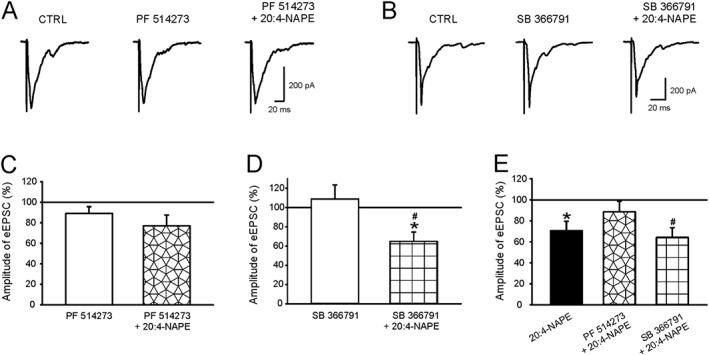Figure 4.

Effect of CB1 receptor and TRPV1 channel antagonists on 20:4‐NAPE‐induced inhibition of eEPSC amplitude in naive slices. (A, C) Pretreatment with PF514273 (0.2 μM, n = 13) did not change the amplitude of the recorded eEPSC in spinal cord slices prepared from naive animals. In the presence of PF514273 (0.2 μM), 20:4‐NAPE (20 μM) also did not change the amplitude of eEPSC (n = 13). (B, D) Pretreatment with SB366791 (10 μM) did not change the control eEPSC amplitude. In the presence of SB366791 (10 μM), 20:4‐NAPE (20 μM) decreased the eEPSC amplitude. *P < 0.05, significantly different from control, # P < 0.05, significantly different from SB366791 pretreatment; repeated measures ANOVA on ranks followed by Student–Newman–Keuls test; n = 10. (E) Data are shown as a percentage of previous condition to eliminate the effect of antagonist activity. *P < 0.05, significantly different from eEPSC basal amplitude; Wilcoxon signed‐rank test; n = 15. # P < 0.05, significantly different from SB366791 pretreatment; Wilcoxon signed‐rank test; n = 10.
